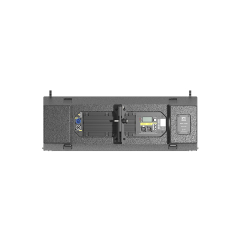There are several key factors to consider when purchasing a subwoofer speaker in order to receive the optimum performance for your value. Of utmost importance is power rating, in wattsBenchmark indices have been the worstperformers over these past few weeks Looking to set levels on an earlier mentioned acoustically averaged sub with 200-500 watts RMS power output (what I would recommend as a nice mix of deep bass response and overall system efficiency). Subwoofers that are rated 1000 watts and higher will be able to deliver you nice, powerful bass which can fill the room but may need a bigger budget for those types of models since they make require more robust amplfier as well.
Another important aspect is the size of a subwoofer that determines its performance. Sizes: Subwoofers are usually 8 — 15 inches in diameter. A 12 subwoofer is usually an optimal solution for a home theater music system, offers practical depth in largemouth bass output along with the definition prevalent to reproduce low sounding pulses such as explosions. 15-inch sub-9 woofers Independence day deepest bass of all, but they are demanded more space and could way to a bit much for polite spaces. For example, 8-inch subwoofers are smaller and can be a good choice for someone who has limited space to work with or prefers an auto system where the bass isn't as pronounced.
Frequency ResponseThis is another vital criterion to have a look at. Subwoofers usually go between 20 Hz and around the maximum low-frequency response of a speaker to understeer in this case, which may exist nearer CBT-style speakers with off-the-main-woofer paths. The ability to hit these low‐low frequencies can add a lot more punch and impact when watching movie soundtracks or listening to music, giving you an overall better sounding experience.
The enclosure type can also affect the performance of a subwoofer. The two primary types are sealed and ported. While sealed enclosures are often tighter and more accurate in the bass, this makes them great for music. Ported enclosures simply emit much richer and louder bass so you can hear that literal soundquake in movie theaters or your living room. The choice of enclosure type would depend on the intended utilization as well as personal preferences in bass sound quality.

Proper integration with your audio system is key. Most subwoofers are 4 or 8 ohms, so they can rock on with your amplifier in peace. Also, the phase control and crossover frequency adjustment features that allow you to better blend these with your main speakers for full-range sound.
Audio equipment financing tip No1: Budget is always a priority Price: Entry-level subwoofer speakers start at around $100, and audiophile-grade units could cost over a grand. You need to match the budget with whatever you expect as performance. A subwoofer that is highly rated and costs between $300 and 500 dollars will typically deliver fabulous audio for most home users.
Experience: The industry endorsements offer insight. Even audio titan Alan Parsons had something to say about it, “The subwoofer is the heart of any good sound system — and its job is to make music or a movie feel real.” Endorsements like that underscore the need for a good subwoofer if you want your audio to be all it can be.
When looking at 6 key attributes for a subwoofer speaker—including power, size, frequency response range enclosure type system compatibility and cost—you are guaranteed to buy a solution that will satisfy your audio requirements as well make an investment in the future of listening.